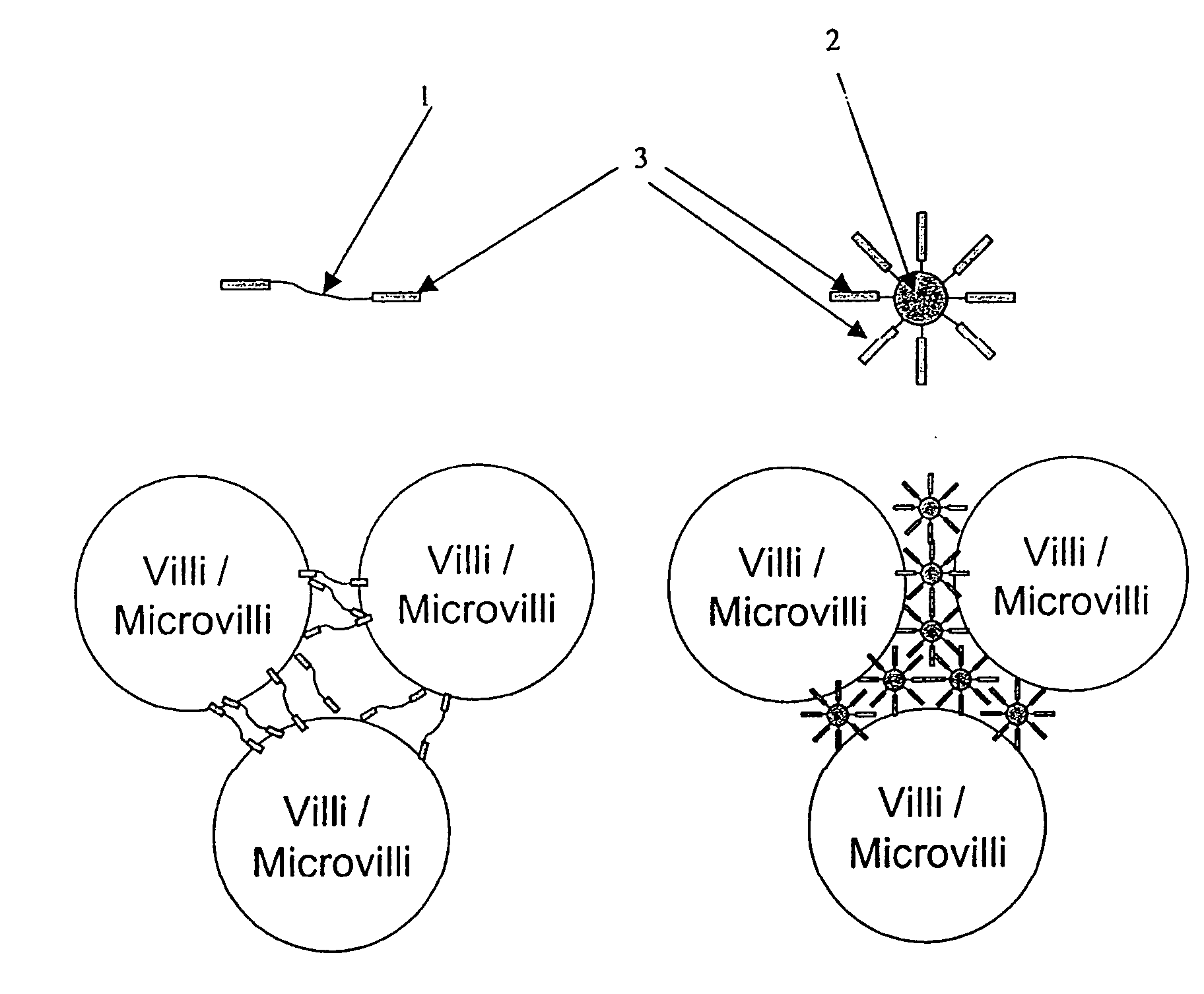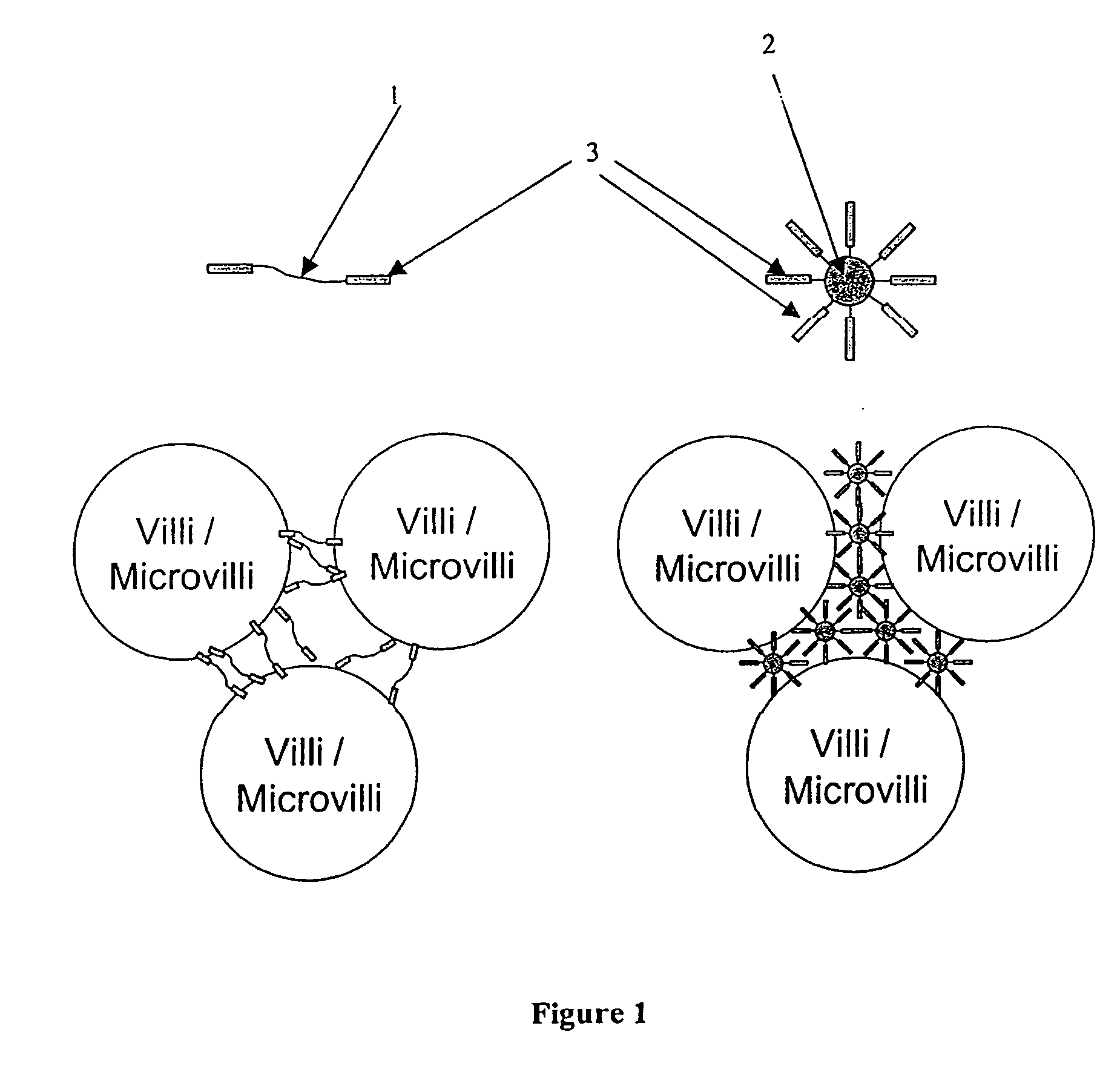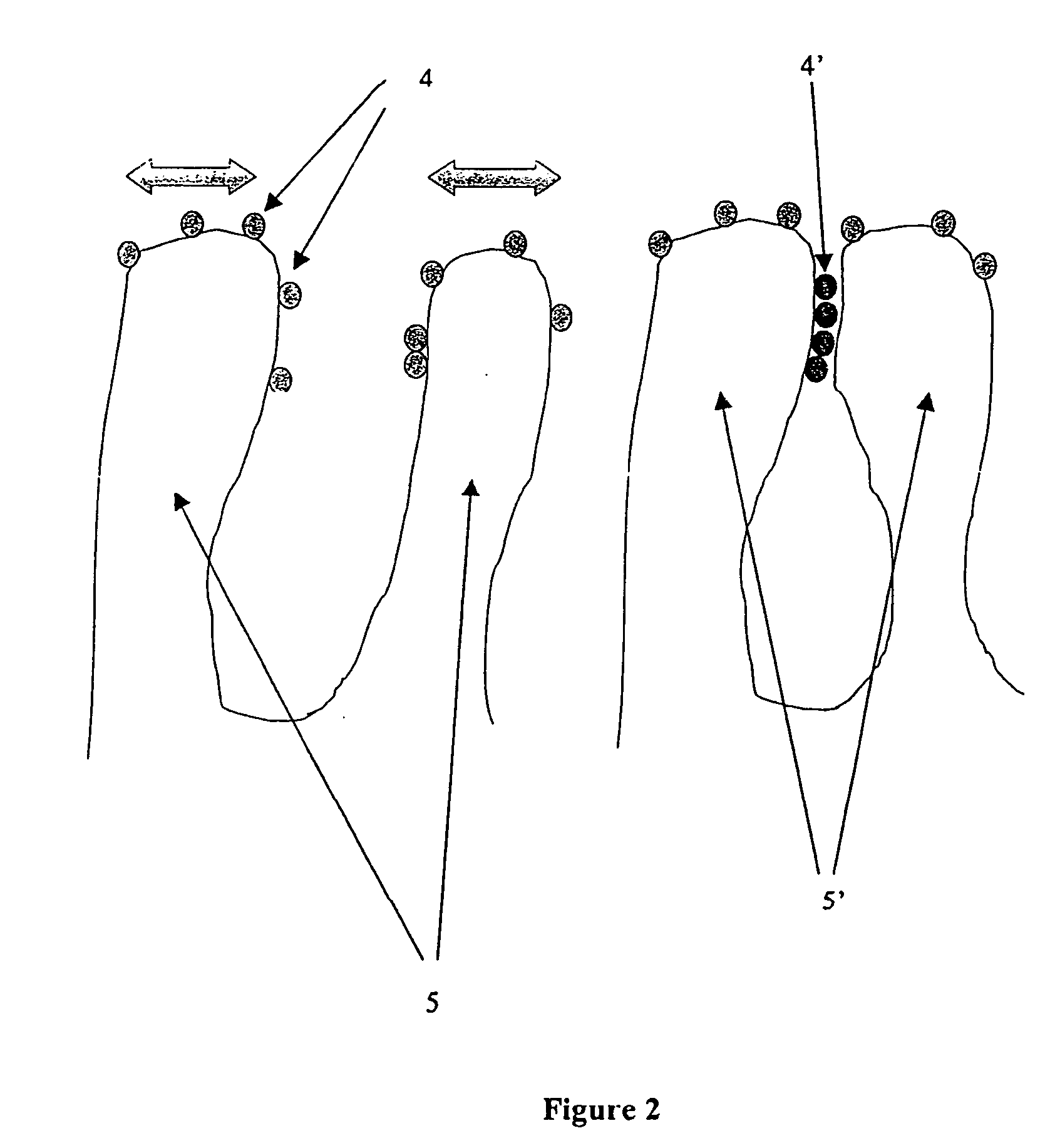Composition and method for treating the gastro-intestinal tract
a technology for the gastrointestinal tract and the composition of the gastrointestinal tract, which is applied in the direction of powder delivery, organic active ingredients, pharmaceutical non-active ingredients, etc., can solve the problems of obesity and its associated symptoms, still no easy, non-invasive treatment providing long-lasting treatment, and difficult to maintain a “healthy weight” , to achieve the effect of reducing the absorption area, restricting the surface area, and restricting the available contact surfa
- Summary
- Abstract
- Description
- Claims
- Application Information
AI Technical Summary
Benefits of technology
Problems solved by technology
Method used
Image
Examples
examples
[0116] In a particularly preferred embodiment of the present invention, monosaccharide ligands are attached to a functionalised polymeric material such as amine functional polyethylene glycol (PEG-NH2) or melamine. This is preferably achieved in an analogous method to that disclosed in U.S. Pat. No. 5,723,589, as summarised in schemes 1 and 2 below.
[0117] Essentially, scheme 1 shows a short difunctional linker molecule, in this case hexane-1,2-diol being activated, protected and functionalised with a molecule of isopropylidene glucofuranose and subsequently deprotected to form a glucofuranose-alkanol compound. This may be reacted with a functionalised polymeric material, for example a carboxylate functionalised polymeric compound, to form an ester linked, glucose functionalsed polymer. Alternatively, the hydroxy group of the alkanol moiety may be converted to a carboxylic acid group, via an aldehyde group. The resulting compound may be reacted with an amine functionalised or hydrox...
PUM
| Property | Measurement | Unit |
|---|---|---|
| Length | aaaaa | aaaaa |
| Weight | aaaaa | aaaaa |
| Molecular weight | aaaaa | aaaaa |
Abstract
Description
Claims
Application Information
 Login to View More
Login to View More - R&D
- Intellectual Property
- Life Sciences
- Materials
- Tech Scout
- Unparalleled Data Quality
- Higher Quality Content
- 60% Fewer Hallucinations
Browse by: Latest US Patents, China's latest patents, Technical Efficacy Thesaurus, Application Domain, Technology Topic, Popular Technical Reports.
© 2025 PatSnap. All rights reserved.Legal|Privacy policy|Modern Slavery Act Transparency Statement|Sitemap|About US| Contact US: help@patsnap.com



